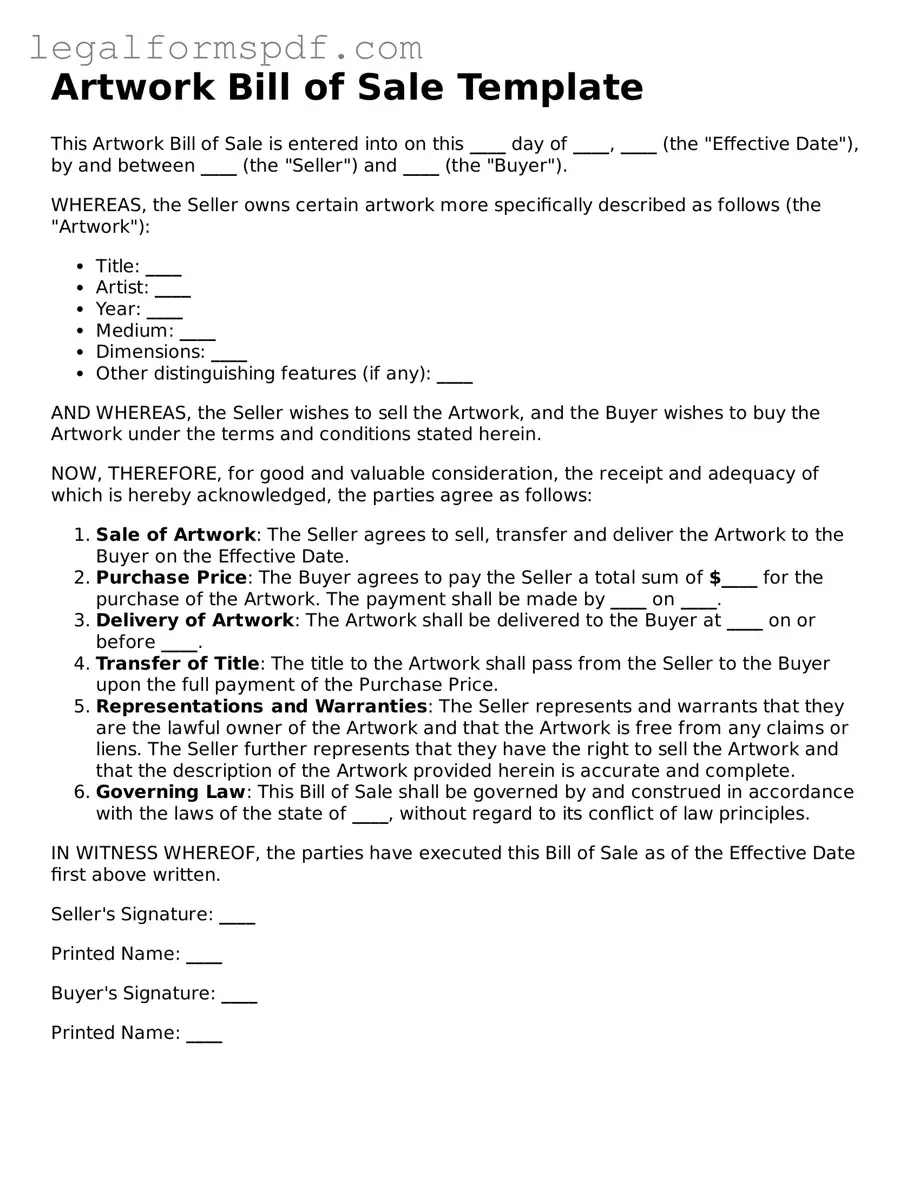What is an Artwork Bill of Sale form?
An Artwork Bill of Sale form is a legal document that records the transfer of ownership of an artwork from one person to another. It serves as evidence that the sale has occurred and details the transaction between the seller and the buyer, including information about the artwork, the sale price, and the date of the sale. This document helps to ensure that the rights to the artwork are properly transferred and provides a record for both parties.
Why do I need an Artwork Bill of Sale?
Having an Artwork Bill of Sale is important for several reasons. It legally documents the transaction, making it easier to prove ownership of the artwork. This can be particularly important for insurance purposes, future sales, or even for establishing provenance. Additionally, it provides clear terms of the sale, which can help to prevent disputes between the buyer and the seller regarding the agreement.
What information should be included in an Artwork Bill of Sale?
An effective Artwork Bill of Sale should include the full names and addresses of both the buyer and the seller, a detailed description of the artwork (including the title, artist, medium, dimensions, and any identifiers like serial numbers), the sale price, the date of the transaction, and any other terms or conditions of the sale. It should also have a place for both parties to sign and date the document.
Do I need a witness or notarization for my Artwork Bill of Sale?
Whether a witness or notarization is needed can depend on the laws of your state. While not always required, having your Artwork Bill of Sale witnessed or notarized can add another level of validity to the document, helping to confirm that it was indeed signed by the parties involved. It's recommended to check local laws or consult with a legal professional to understand the requirements in your area.
Can I create an Artwork Bill of Sale form by myself?
Yes, you can create an Artwork Bill of Sale form by yourself. All necessary parties should ensure that the document accurately reflects the details of the sale and the information about the artwork. There are templates available that can serve as a starting point, but it's important to customize the document to your specific transaction. However, for high-value transactions or unique situations, consulting with a legal professional is advisable.
How does an Artwork Bill of Sale protect the buyer?
An Artwork Bill of Sale protects the buyer by providing a record of the purchase and transfer of ownership. This document can serve as proof of the buyer's legal ownership of the artwork, which is essential for insurance claims, proving provenance, and defending against any future claims of ownership. Additionally, the terms outlined in the Bill of Sale can protect the buyer from any disputes regarding the condition or authenticity of the artwork.
Where should I store my Artwork Bill of Sale?
It's recommended to store your Artwork Bill of Sale in a safe, secure place where it will be protected from damage, loss, or unintended destruction. Both the buyer and the seller should keep original copies. For extra security, you might consider making electronic copies to be stored digitally in a secure location. This ensures that the document can be easily accessed when needed, while also protecting against physical deterioration over time.
